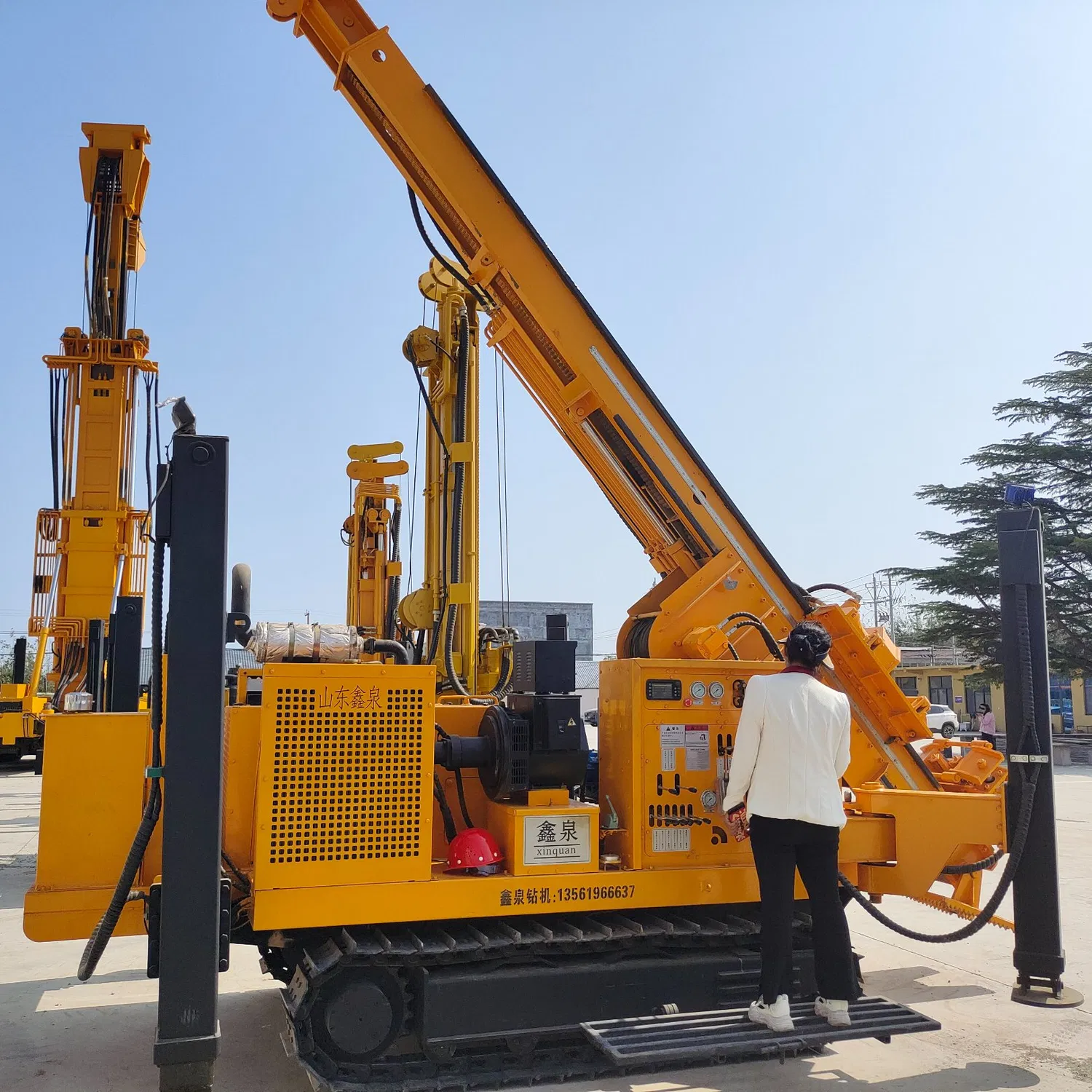Extension of the Service Life of Rock Core Drill Bits and Control of Consumable Costs
In engineering practices such as mineral exploration and geological sampling, the drill bit, as a core consumable of the core drill rig, directly affects the construction cost and operation efficiency with its service life. As a drilling and mining equipment manufacturer with over years of experience in the research and development of drilling equipment, Shandong Bangxin Masjinerie Toerusting Co., Bpk. addresses the differentiated demands of drill bits under various geological conditions through a dual-track model of “customized R&D + process innovation”, helping customers extend the service life of drill bits and optimize the overall cost.

core drill rig
I.Breakthroughs in Materials Science: Iterative Upgrades from Alloys to Composite Materials
The core constraint on the lifespan of drill bits lies in the material’s tolerance to friction and impact against rocks. Although traditional hard alloy drill bits have a lower cost, they are prone to chipping and burring in hard rock formations. By constructing a metal ceramic transition layer between the drill bit base and the cutting edge, molecular-level bonding between the alloy particles and the base is achieved, enhancing the overall impact resistance and toughness. For diamond composite bit drill bits, we introduce a multi-layer composite brazing process. Through the combination of copper-based brazing filler and nickel-based transition layers, the bonding strength between PDC teeth and the steel body is increased, preventing abnormal wear caused by the detachment of composite plates during drilling.
II.Structural Innovation Design: Geometric Parameter Optimization Based on Operating Conditions
The structure of the drill bit directly determines the chip removal efficiency and heat distribution. In sticky formations such as shale and mudstone, we adopt a helical water channel and an interlaced water hole design. Through computational fluid dynamics simulation to optimize the flow field of the flushing fluid, the speed of rock powder discharge is increased by 45%, and the edge wear caused by repeated grinding is reduced. For soft and broken zones, a two-stage stepped drill bit is developed: the leading part uses a small helix angle of 30° for rapid penetration, and the rear part uses a large helix angle of 45° to enhance the chip removal capacity. Combined with a variable diameter guiding structure, the problem of eccentric wear caused by stuck pipe is avoided. This modular design extends the drill bit life by 2.3 times in class IV rock formations.
III. Customized Services: Precise Matching Driven by Geological Data
Relying on the geological database accumulated over many years, we have built a drill bit performance prediction model. Once the customer provides parameters such as formation lithology, compressive strength, and quartz content, the technical team will quickly output a customized solution.
For soft rock layers: It is recommended to use a four-wing conical drill bit with a 38° rake angle, combined with 0.8mm ultra-fine grain alloy teeth to reduce the cutting-in resistance.
For medium-hard rock layers: A six-wing flat-bottom drill bit structure is adopted, with each cutting tooth equipped with an independent shock absorption module to alleviate impact loads.
For extremely hard formations: PDC-hard alloy composite drill bits are provided, with 8mm diameter PDC teeth arranged at the front edge to undertake the main cutting, and hard alloy teeth placed at the rear for secondary finishing.
This precise matching has increased the average footage of φ75mm drill bits in a copper mine project in Yunnan from 120 meters to 380 Meter, and reduced the single-hole material cost by 62%.
IV.Manufacturing Process Innovation: Micro-Defect Control System
In the heat treatment process, dual-frequency induction hardening technology is introduced. By alternating electromagnetic fields of 20kHz and 200kHz, a gradient hardness layer is formed within a depth of 1.5mm on the surface of the drill bit, achieving a surface hardness of HRC68 while maintaining a core hardness of HRC42 for toughness. During the manufacturing process, industrial CT is used for real-time monitoring to locate and mark defects such as pores and inclusions larger than 0.05mm in diameter. Each drill bit is subjected to 3D morphology comparison and stress field analysis before leaving the factory to ensure quality.
V.Full Lifecycle Management: A Closed Loop from Use to Remanufacturing
We offer drill bit regeneration services, performing laser cladding repair on recycled drill bits. Through a coaxial powder feeding device, a tungsten carbide coating is deposited on the worn areas. Combined with subsequent cryogenic treatment (-196℃ liquid nitrogen immersion), the service life of the regenerated drill bits can reach over 85% of that of new ones. Meanwhile, we have developed an intelligent monitoring system that infers the wear state of the drill bit from drilling parameters and issues a warning 15 hours in advance for replacement, thus avoiding in-hole accidents caused by sudden failure.
From the permafrost layers of the Qinghai-Tibet Plateau to the granite belts along the southeast coast, we have provided customized core drilling equipment solutions for many domestic and foreign exploration units. Welcome to consult our technical team to obtain an optimized consumables solution tailored to your specific geological conditions, ensuring that every meter drilled creates higher value.
 Bangxin-boortuig
Bangxin-boortuig